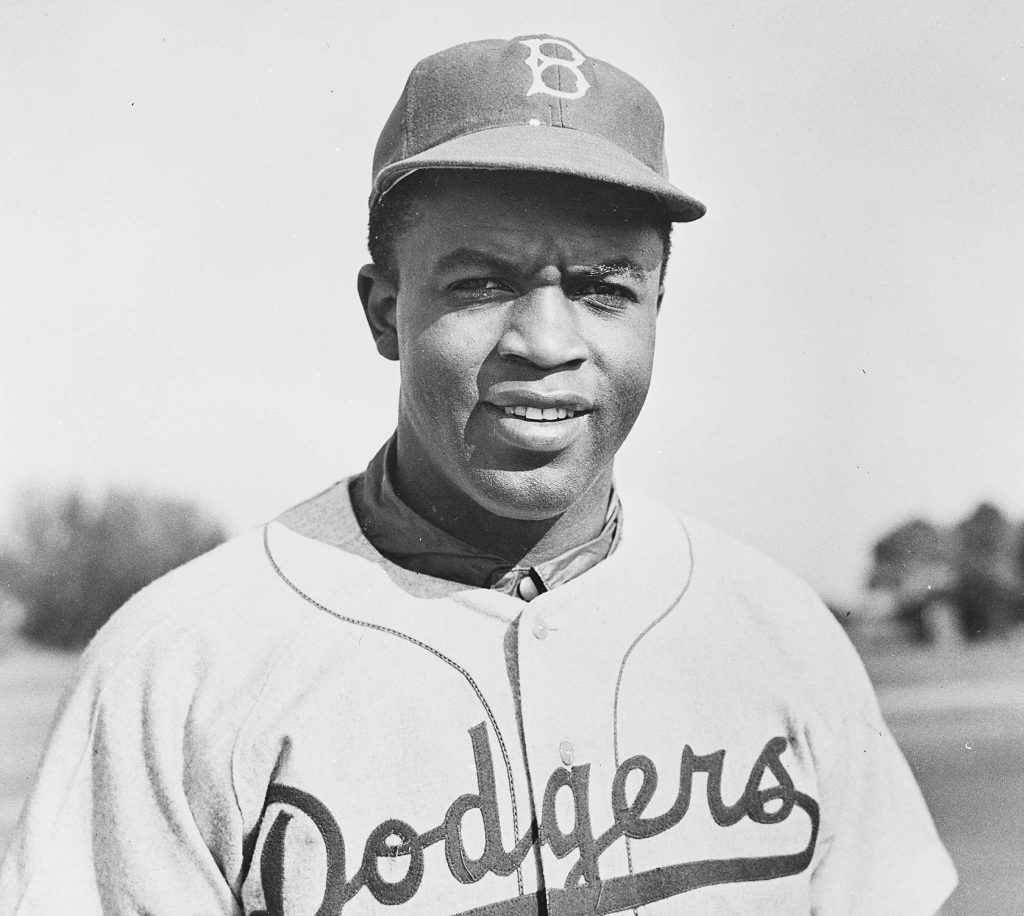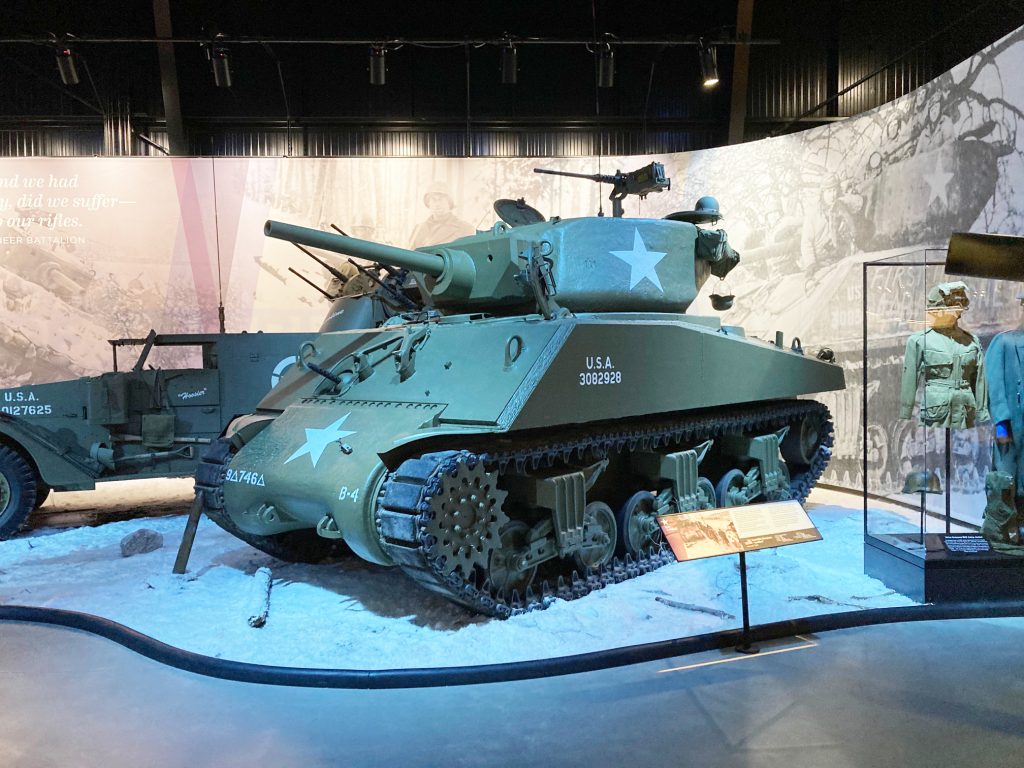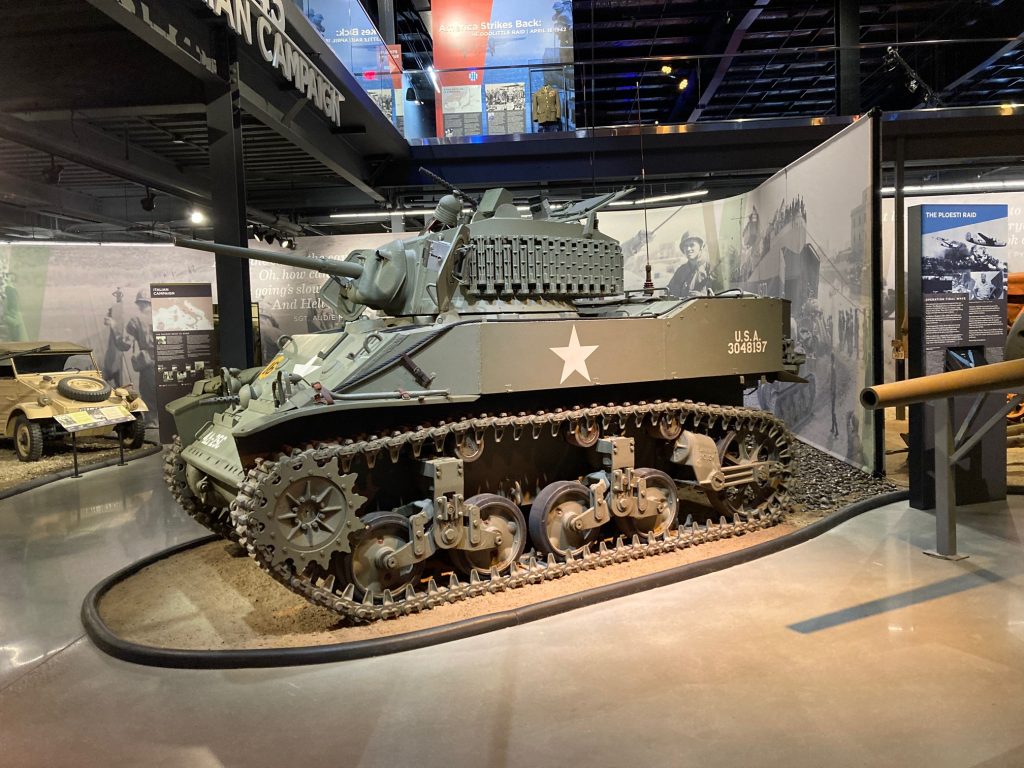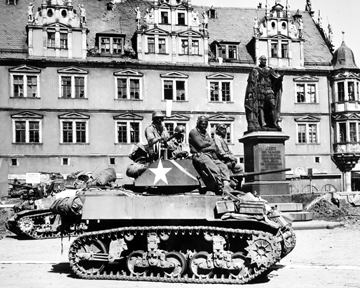The 761st was made up primarily of African-American soldiers, who by War Department policy were not permitted to serve alongside white troops; the U.S. military did not officially desegregate until after World War II. The 761st were known as the Black Panthers after their unit’s distinctive insignia, which featured a black panther’s head; their motto was “Come out fighting”. The battalion received a Presidential Unit Citation for its actions. In addition, many individual members also received medals, including one Medal of Honor, 11 Silver Stars and about 300 Purple Hearts. The unit has been called “one of the most effective tank battalions in World War II.”
The 761st Tank Battalion’s motto was “Come Out Fighting.” And that it did, from its first engagement at the little Belgian town of Morville-les-Vic in November 1944, and through heavy combat right through to the end of the war. But the 761st’s fight was not just against the Germans. As a segregated African American unit, it took part in the struggle for racial equality—a struggle in which the men of the 761st—the so-called “Black Panthers,”—would engage for the rest of their lives.
Brought into existence on April 1, 1942, at Camp Claiborne, Louisiana, the 761st Tank  Battalion trained amid the restrictions and racism of the Jim Crow South. First Lieutenant Jack Roosevelt Robinson (photo left) of the 761st, an athlete who would become one of the greatest baseball players of all time, lost his chance to see combat when he refused to move to the back of a segregated military bus during an incident at Fort Hood, Texas in July 1944. The 761st battalion’s commander, Lt. Col. Paul L. Bates, refused to prosecute Robinson, but his superiors got around that by transferring the lieutenant to another unit, where he was court-martialed. Robinson was later acquitted, but too late to rejoin the Black Panthers.
Battalion trained amid the restrictions and racism of the Jim Crow South. First Lieutenant Jack Roosevelt Robinson (photo left) of the 761st, an athlete who would become one of the greatest baseball players of all time, lost his chance to see combat when he refused to move to the back of a segregated military bus during an incident at Fort Hood, Texas in July 1944. The 761st battalion’s commander, Lt. Col. Paul L. Bates, refused to prosecute Robinson, but his superiors got around that by transferring the lieutenant to another unit, where he was court-martialed. Robinson was later acquitted, but too late to rejoin the Black Panthers.


The 761st Black Panthers trained in and used mostly M4 Sherman (top photo) medium tanks and M5 Stuart (bottom photo) light tanks. You can find the M4 Sherman tank in our “Battle of the Bulge” exhibit and the M5 Stuart in the “Italian Campaign” exhibit. After a brief deployment to England, the 761st landed in France via Omaha Beach on 10 October 1944. The unit was assigned to General George Patton’s US Third Army at his request. The unit saw action in Northern France from October 1944, it fought in the Battle of the Bulge, later proceeding to the Rhineland, and spent the final months of the war on German soil.
Capt. John Long of B Company proudly summed up his pride for the Black Panthers and their conduct. “Not for God and country but for me and my people,” he said “I expected to get killed, but whatever happened I was determined to die an officer and a gentleman.”
For more reading see:
https://en.wikipedia.org/wiki/761st_Tank_Battalion_(United_States)
https://www.historynet.com/black-panther-battalion-backed-by-patton-took-the-fight-to-the-nazis.htm
http://www.761st.com/18update/2018a/




